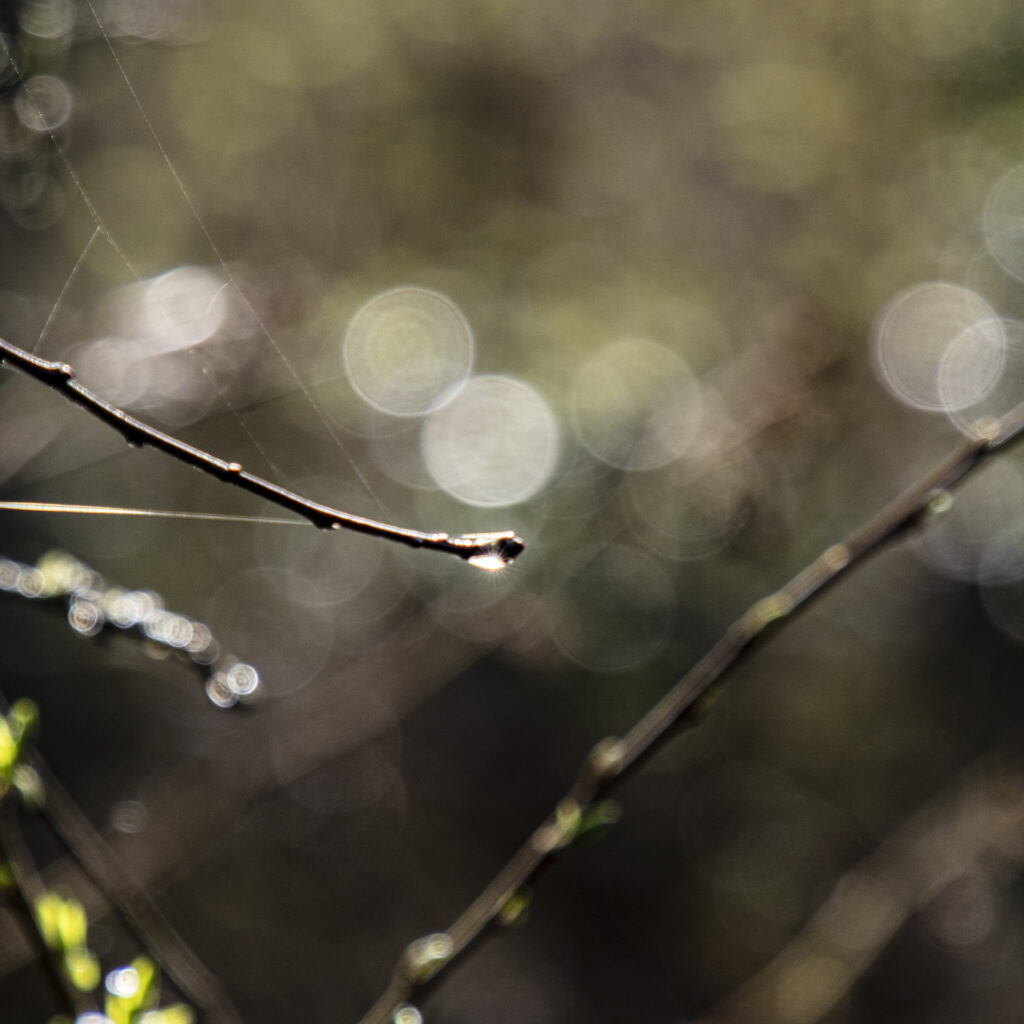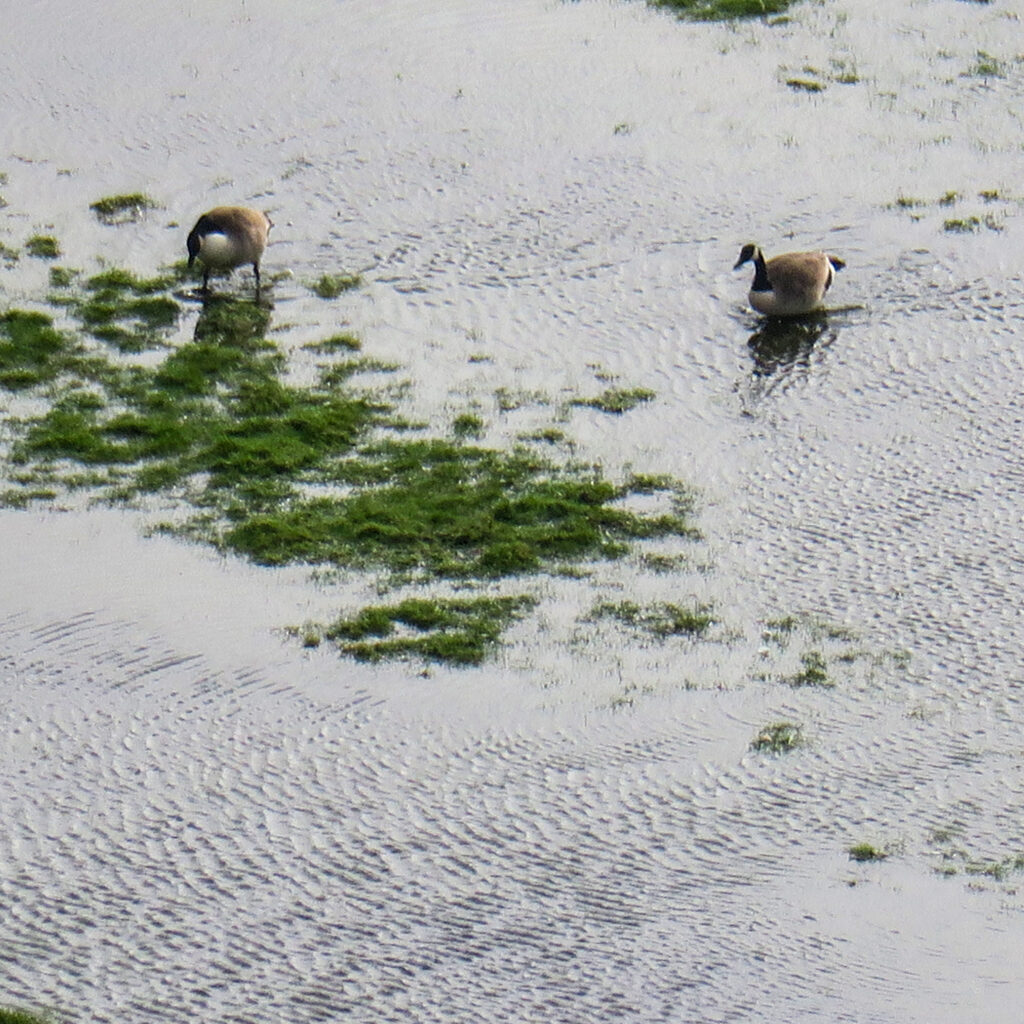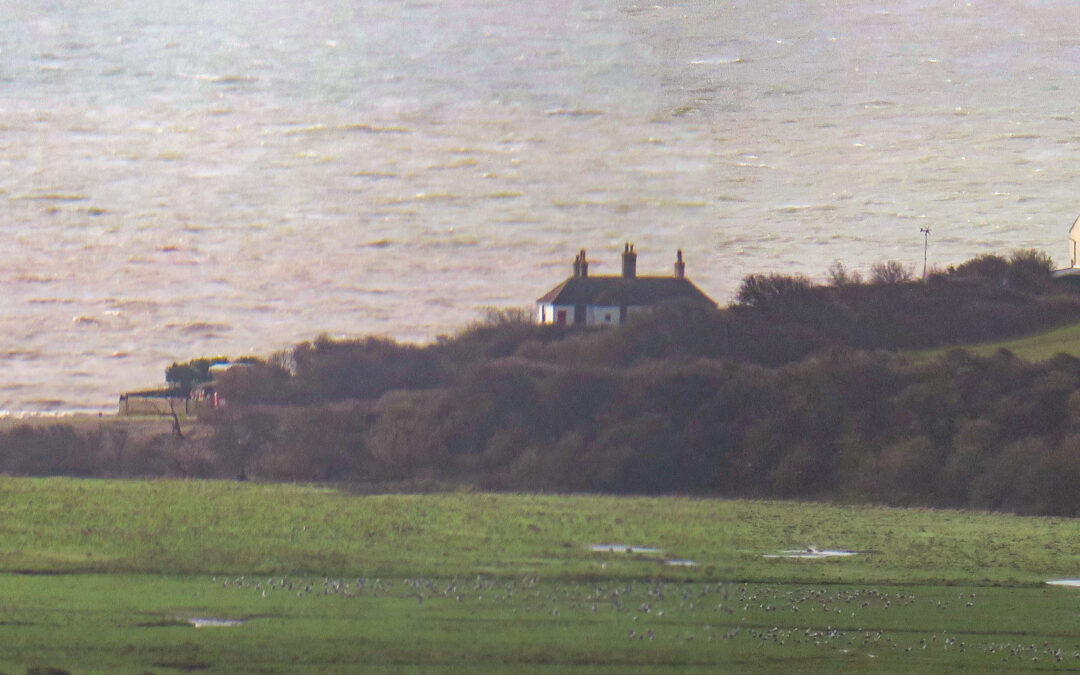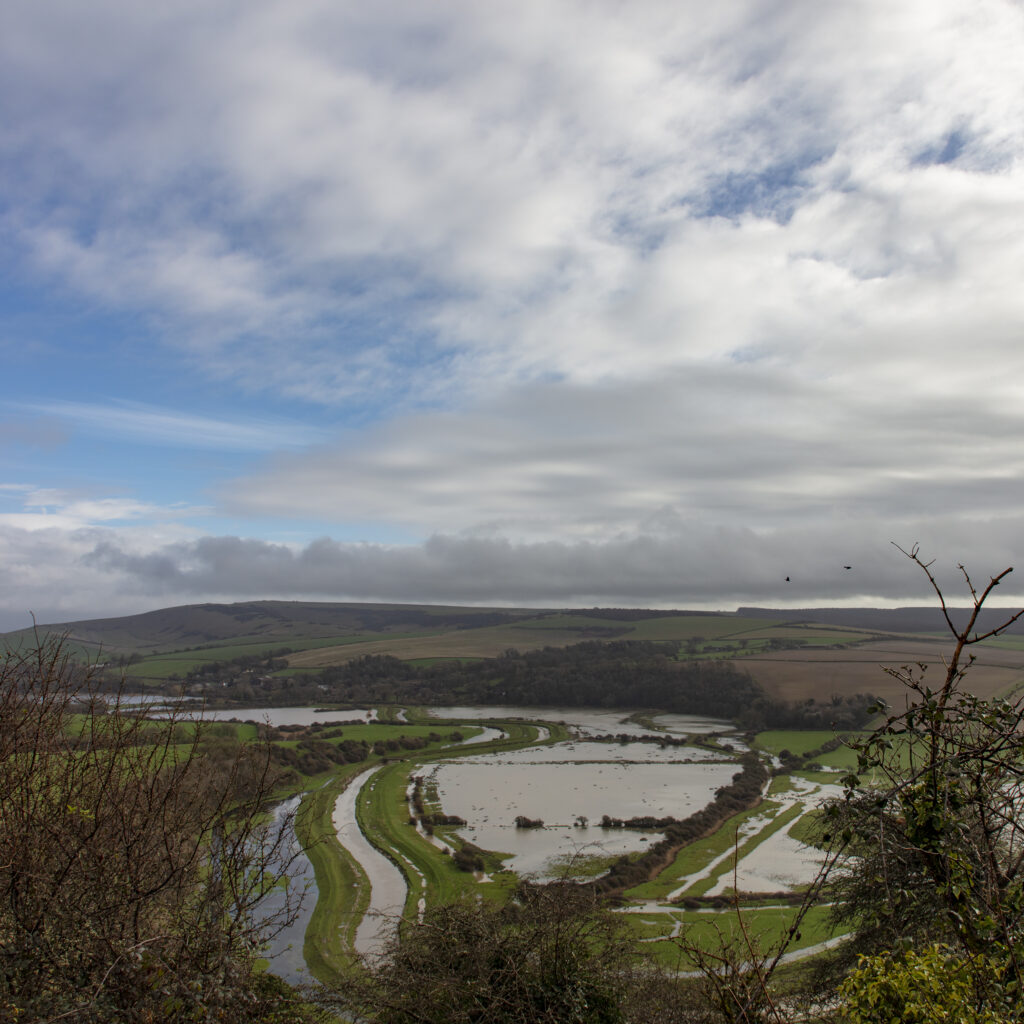As the rain continues, one commentator remarked that “Alfriston is afloat”. Flooding from the Cuckmere is commonplace around the village and its church, the ‘Cathedral of the South Downs’, and only increases as the Environment Agency allows the sea defences at the river mouth to decay, along with the destruction this inaction brings with it. This increases the tide flooding up the river at high tide points, reversing its flow and increasing the likelihood of flooding all along its banks. At the mouth of the river as the tide turns there is a mini ‘Severn Bore’, helping the flooding that is increasingly also helped by the lack of dredging of the river by the said Environment Agency. A huge downside for those who live on its banks.
Constant rainfall over the last few weeks which is to be expected in winter has resulted in land being saturated and the flows in the river being higher than they would be at any other time of year. I wander the ridge of the Down at delightfully named High’n’Over to look at the lakes that are created. I have photographed them many times before, even in moonlight to my delight, and I call this occasional beauty the Sussex Lake District.
Wordsworth may have wandered along the banks of Grasmere commenting on nodding daffodils, but here the golden blooms hide in the brambles from the salty sea breezes which whip up the valley and across the top of the Downs. The path is muddy, very muddy, I imagine one slip and I could slide down the face of the chalk White Horse carved on the hillside to splash into the river below. The world hangs reflected in raindrops on tips of branches, already tethered by cobwebs glistening in sun’s rays bursting through the prism of the water. The sound of the road is absent since the authorities had a sign posted in Seaford saying Road closed. It is closed in Alfriston as the river has proven the Alfriston doesn’t float but sinks.
Across the road the vines in the vineyard are greening with the early spring leaves. In the fields on the Downs lambs gambol and grumpy sheep stare at me across the sward. I navigate the mud meeting to my delight someone who has one of my artworks hanging over their fireplace and rhapsodises about how they enjoy it. Quite makes my morning. I pause briefly to watch the crows knowing that the aerobatics are merely giving them the opportunity to spot a piece of carrion to devour or a pigeon to attack. Below the pattern of early farming is revealed by the flood waters and Brent geese delight in paddling their new feeding pools.
More rain this afternoon will bring more water into the river and raise the levels rising still as water flows off the Downs into the water course. As it drains across the roads, streams develop into rivulets flooding across, gathering other rivulets, building against kerbs to create mini-lakes that cars carelessly splosh through, pools that grow as water flows up the drains from the rising river, pools that hide muddy trenches and potholes like mine shafts.
The shingle shovelers are at work on Seaford’s beach dragging the singing shingle backwards and forwards to reinforce the sea defence that they make. Unfortunately for the environment agency the shingle is washed in storms along the coast and deposited at the mouth of the Cuckmere. A little while ago it formed a formidable barrier that stopped the river reaching the sea. The Agency of course did nothing, but residents took their spades down to cut a channel for the river to the sea. They did both because the river was starting to stink partly from dead fish because of the lack of oxygen in the water, but also because it was unable to wash the sewage residues that delightful Southern Water board allows into our water courses.
The river flow was restored eventually after one of the residents came down in his digger and using its mechanical shovel cleared the shingle. Quite what we fund the environment agency for remains a mystery along this part of the coast. Apart from employing massive diggers with signs along the beach saying, ‘take care plant crossing’ (migrating geraniums?) to warn bathers and others of the presence of their mechanical devices, they appear to do very little for the local environment. The cliffs continue to fall into the sea whilst shingle continues to move down the coast. Reputedly the beach at Dungeness having moved a further 200 feet out to sea with shingle deposits collected and redeployed by the currents. So England gets nibbled away with pieces of history like the cable hut, linking Britain to France in 1918 and which carried documents relating to the end of WW1, allowed to fall into the water…
The kittiwakes are back at Seaford Head the rockfall there has not deterred them at all. The natural cycle of destruction and reconstruction is complicated by what man does or doesn’t do. The natural world doesn’t miss a beat.



After a month or so those Brent geese will have arrived in Iceland to refuel for a couple of months on their way to the islands north of Canada. Then they return in September before setting off once again for Cuckmere.